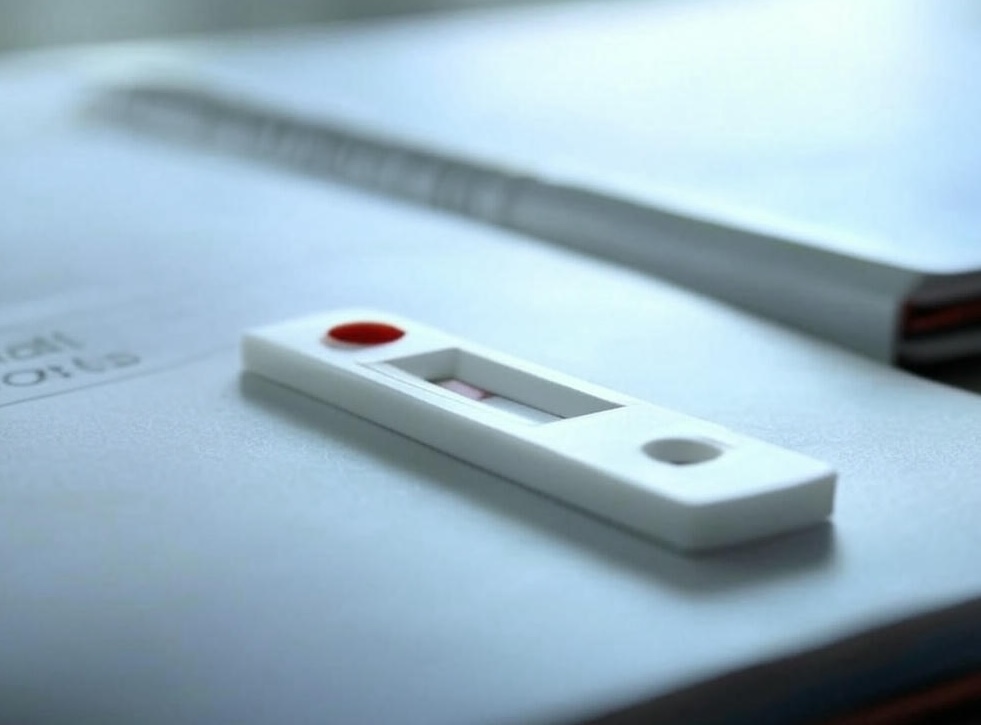Medical diagnostics have traditionally been confined to clinics and laboratories, requiring multiple appointments, long waits, and often invasive procedures. However, with the rapid advancements in healthcare technology, at-home blood tests are becoming a powerful tool for monitoring health, detecting early warning signs, and making informed lifestyle choices.
With just a single drop of blood, these tests can now provide insights into essential health markers, including blood sugar, cholesterol, vitamin deficiencies, hormone imbalances, and even genetic predispositions. This shift in healthcare is giving individuals greater control over their well-being, allowing them to track important health metrics without visiting a doctor’s office.
But how reliable are these tests? What can they really tell us, and how should the results be interpreted? Understanding their capabilities—and their limitations—is key to making the most of at-home medical diagnostics.
How At-Home Blood Testing Works
The technology behind at-home blood tests has evolved significantly in recent years. Unlike traditional blood draws that require a needle inserted into a vein, these tests use a simple finger-prick method. A small lancet punctures the skin, producing a droplet of blood that can be analyzed either instantly using biosensors or sent to a lab for detailed testing.
Some devices, such as glucose monitors, provide immediate results, displaying health data in real time. Others involve collecting a small sample, placing it in a special container, and mailing it to a laboratory for a more comprehensive analysis. The results are typically delivered through a secure online portal or mobile app, often with guidance on what the numbers mean.
These tests have made routine health monitoring faster, easier, and more accessible, offering individuals a clearer picture of their internal health without waiting for symptoms to appear.
What Can a Drop of Blood Reveal?
A tiny blood sample contains an enormous amount of biological information. The most commonly tested markers include glucose, cholesterol, inflammation levels, vitamin deficiencies, and hormone imbalances—all of which can provide early warnings about potential health risks.
Blood sugar testing is one of the most widely used at-home diagnostics. People with diabetes, or those at risk, can monitor how their body processes sugar throughout the day, helping them adjust their diet and medication as needed. Elevated glucose levels over time can indicate metabolic disorders, while sudden drops may signal hypoglycemia, which can lead to dizziness, confusion, or fainting.
Cholesterol and heart health markers are another critical area of focus. High cholesterol is a silent risk factor for heart disease and stroke, yet it often goes unnoticed until a major health event occurs. Monitoring LDL (bad cholesterol), HDL (good cholesterol), and triglycerides allows individuals to take preventive measures before serious cardiovascular problems develop.
Nutrient deficiencies can also be detected with at-home blood tests. Many people unknowingly suffer from low vitamin D, iron, or B12 levels, which can lead to fatigue, weakened immunity, and cognitive decline. Identifying these deficiencies early enables individuals to adjust their diet or take supplements to correct imbalances before they cause long-term health issues.
Hormonal fluctuations have a profound impact on mood, metabolism, energy levels, and reproductive health. At-home hormone testing can help detect imbalances in thyroid hormones, testosterone, estrogen, and cortisol, providing insights into stress levels, weight management, and even fertility concerns.
Some tests go beyond standard health markers, offering insights into inflammation and autoimmune activity. Chronic inflammation has been linked to numerous health conditions, including arthritis, heart disease, and even neurodegenerative disorders. By tracking inflammatory markers, individuals can make lifestyle adjustments that may reduce their risk of developing chronic conditions.
Perhaps one of the most exciting advancements in at-home blood testing is the rise of genetic screening. These tests analyze DNA to identify predispositions to diseases such as diabetes, Alzheimer’s, or heart disease, allowing individuals to take preventive action before symptoms ever develop. While genetic testing doesn’t predict with certainty whether someone will develop a condition, it provides a blueprint for making informed health decisions based on individual risk factors.
The Benefits and Limitations of At-Home Testing
The appeal of at-home blood testing lies in its convenience, accessibility, and ability to detect potential health issues early. For those managing chronic conditions, these tests provide a way to track real-time changes and adjust lifestyle choices accordingly. They also eliminate many of the barriers associated with traditional healthcare, such as long wait times, travel to medical facilities, and costly doctor visits.
However, while these tests offer valuable insights, they are not a replacement for professional medical evaluations. A single test result should never be used as a definitive diagnosis. At-home testing is most effective when used as a screening tool that helps individuals identify patterns and decide when to seek further medical advice.
Another consideration is accuracy. Some tests are highly precise, while others may be affected by factors like user error in sample collection. Choosing reputable, FDA-approved or clinically validated test kits is essential for obtaining reliable results.
Interpreting results correctly is another challenge. Many at-home testing companies provide explanations along with test results, but these may not always account for individual health history, medication use, or underlying conditions. Consulting a healthcare professional remains important for understanding what the numbers truly mean and determining the best course of action.
The Future of At-Home Blood Testing
With advancements in biosensor technology, artificial intelligence, and real-time data analysis, at-home medical testing is rapidly becoming more sophisticated. Researchers are developing non-invasive methods that may soon allow for continuous health monitoring without the need for finger pricks.
Some of the most promising innovations include smartwatches with built-in glucose monitoring, devices that use infrared light to analyze blood composition, and AI-powered platforms that can detect disease risks before symptoms appear. These advancements will make at-home testing even more reliable, integrated, and personalized—allowing for truly preventive healthcare.
The integration of at-home diagnostics with telemedicine is another significant development. In the future, test results could be automatically shared with healthcare providers, allowing for instant feedback and treatment adjustments without the need for in-person visits. This shift could make healthcare more proactive and personalized than ever before.
Taking Control of Your Health
At-home blood testing represents a major step forward in preventive healthcare, allowing individuals to detect imbalances, monitor risk factors, and make informed health decisions before conditions become serious. While these tests should not replace regular checkups with a doctor, they can be an essential tool for early intervention and ongoing health management.
For those looking to integrate at-home testing into their routine, starting with basic screenings for blood sugar, cholesterol, and vitamin levels is a great way to begin. Choosing clinically validated test kits and discussing results with a healthcare provider ensures that the information gained is used effectively.
As medical technology continues to advance, personalized health monitoring will become an everyday reality. The future of healthcare is shifting from reactive treatment to proactive prevention, and it all starts with a simple drop of blood.




